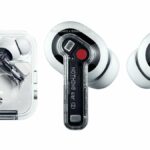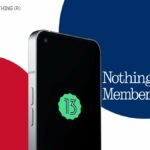The thing about the Galaxy Note 8 is that it’s not ‘just’ a smartphone. It’s that and a stylus-centric tablet and a pocket computer, all in one. Even though there are annoyances, there’s no escaping the raw power and flexibility of the Note 8. It’s beautiful, it’s immaculately built, and it packs enormous productivity and performance punches.
Apple (and others) like to proclaim that their phones are ‘what smartphones have become’, but as I hold the Note 8 I can sense the six years of development and iteration that has led to the form factor, construction and materials.

The Bixby button, mono speaker, and fingerprint sensor position all still rankle, but otherwise, the Note 8 is… demonstrably perfect.
The feel and size in the hand, the smooth and curved edges, the tiny bezels and maximum display, the power packed-internals. Need storage expansion? Use a microSD card. Need to plug in standard headphones? There’s a 3.5mm jack. Need to take a great macro photo? The Note 8’s camera is right up with the best in the world. Need to scribble a few notes or annotate something on-screen? That’s what the inductive S-Pen is for. Fancy wireless charging? It’s here. Need your phone to be waterproof, perhaps to take party snaps pool-side? No problem. Want to expand the Note 8’s display to a full desktop experience? That’s what the optional DeX (not covered here) is for. And so on. There’s almost nothing the Note 8 can’t do.

You do, of course, pay for all this, with the Note 8 currently the highest priced regular smartphone in the world, at around £850 in the UK currently, including VAT. But it’s worth it if you want it all. (If you can’t afford the Note 8 then just get any number of other Samsungs, right down to the Galaxy S7 Edge at a mere £400 now, under half the price, and you’ll have 90% the functionality. But if you want 100%, if you want the whole enchilada, then the Note 8 is worth straining your wallet for.
It’s true that part of my current enthusiasm for this Galaxy Note comes from the failure of its predecessors. The Note 5 never came to the UK at all, the Note 7 arrived and then started bursting into flames, so it has been a long, long time since I’ve been able to wax lyrical about a phone so capable. Since the classic Galaxy Note 4, in fact, back in 2014, an eternity in the phone world.
Hardware
The terrific feel in the hand comes from being designed around the new 18.5:9 aspect ratio 6.3” QHD+ display. Tall and thin means a larger display with smaller bezels and the possibility of normal mortals with regular sized hands being able to hold the Note 8 securely. With thumb meeting fingers around the phone, I never felt like dropping it (though, as usual, I have to recommend using something like this in a TPU case while out and about, just in case).

It’s Gorilla Glass 5 and so very tough, front and back, so most of the time the Note 8 can be treated casually – it’s not going to scratch or break with regular use. I was reviewing the rarer gold Note 8 (it’s also available in black, grey or blue in most markets), even more leading to the sense that I was handling a piece of jewellery. A very tough, very powerful piece of jewellery. As I say, pick this up and you can see where your money’s gone.
The Samsung AMOLED display is top notch, as usual, visible in all lighting conditions, with super colours, contrast and brightness. No one does screens like Samsung. Which is partly why the rest of the world beats a path to its door to license the displays that Samsung’s factories produce.
The Always On display is here as usual, with just enough AMOLED pixels being lit up to show time, date and basic (though double-tappable) notifications at all times, with no need to wave at the phone or press a button or similar. I first saw always-on technology back in the late 2000s on Nokia phones, so all this isn’t exactly new, but it’s now mature and implemented well and not on every flagship, even in 2017.

The top and bottom bezels are nicely symmetrical and large enough for the front camera and sensors at the top, with no need for an Apple iPhone X-style notch, despite the default unlock method being to use your face (iris scanning is also present, but less reliable and convenient in my tests, as a wearer of spectacles!) Admittedly, the face unlock doesn’t work in the dark (unlike on the upcoming iPhone), but it works in almost all other light conditions and is surprisingly quick and convenient, yet without needing expensive and bulky components that require compromising the display (as on the ‘X’).
The screen edges fall away to mate up with an aluminium chassis – you can feel the joins, but they’re super-smooth and enhance grip in the hand. (If the edges had melded seamlessly there would be nothing for your fingers to latch onto.) Metal buttons for Bixby, volume and power do the job, while top and bottom microphone holes capture stereo sound if needed (and noise cancellation when on a call).

Down at the Note 8’s bottom edge are the welcome 3.5mm headphone/AUX jack, for which many thanks Samsung – don’t get fooled by the Apples and Googles of this world, people do need this port. Plus a USB Type C jack, supporting up to the Quick Charge 3.0 standard and the USB 3.1 protocols, meaning lightning fast file transfers when plugged into a PC or similar and fast extension via the Samsung DeX monitor extension system.
Also on the bottom is the mono speaker, typical of Samsung’s recent phones – it does the job but pales compared to the best phone speakers (I’m thinking iPhone 8 Plus here). In addition, with only one sound output port, it’s all too easy to inadvertently block it with your hand when holding the phone in landscape mode, playing a game or watching media – I see no reason why Samsung couldn’t have also used the earpiece port at the top of the phone (again, like the recent iPhones).
Still, the Korean manufacturers have never gone down the stereo speakered route, probably a cultural noise pollution thing and unless you’re as obsessed as I am with phone speakers you’ll be quite happy with the Note 8’s output.
S-Pen
Finally there’s the famous S-Pen. This is inductive, pressure-sensitive, and far more clever than a ‘capacitive’ stylus – a push on its end and it pops out. If the phone was nominally ‘off’ then an all dark ‘Samsung Note’ pane appearing on screen, ready to be scribbled on (these notes are saved for later sharing or inspection, of course, in the main app); if the phone is already powered on then the ‘Air Command’ carousel appears on the screen, asking what you want to do with the S-Pen:
- ‘Smart select’ (text, image or video capture, the latter with a cute ‘don’t steal other people’s content’ warning!)
- ‘Screen write’ (screenshots and then lets you annotate it)
- ‘Live message’ (simple scribbles that animate and sparkle, which get saved and shared as GIFs)
- ‘Translate’ (auto translates any ‘hovered over’ words using your chosen language pair)
- ‘Bixby vision’ (intelligently extracts, translates blocks of text, and more, based on what you hover your stylus over)

Quite often S-Pen use will be scribbling down a phone number or reference ID while talking to someone, i.e. without having to think on the fly about exactly where you want to store the information. Or perhaps you’d often need to highlight text on a web page or in an email for translation into (and from) dozens of included languages?
The S-Pen opens up a whole new world of creativity and productivity reminiscent of the stylus-driven PDAs of the 1990s and early 2000s, yet with a larger canvas, far faster response and Google’s cloud services to handle searches and translations.
Having said all of this, just as with the previous Notes, most people will find themselves leaving the S-Pen in its silo most of the time – I know I did – with modern large screened capacitive touchscreens it’s easy to forget that the stylus is available. Still, as with the rest of the extensive spec sheet here, the S-Pen is a feature that’s nice to have, fun to play with, and will ultimately reward you fighting your way up the learning curve in finding new things you can do with it. The stylus lifts the Note 8 away from the chasing smartphone pack in ways that you’ll take months to really discover.

Smart Select, here highlighting a paragraph and translating its contents and (right) screen capturing from a video, with the result an animated GIF.
Biometrics
Around the shiny Gorilla Glass 5 back is the camera and sensor island, flush apart from a raised metallic ring for protection purposes. Still controversially, Samsung has included the fingerprint sensor in here, off to one side where it’s hardest to reach. It’s a little ridiculous and rather a waste of space. On this tall a phone it’s almost impossible to reach with your index finger and certainly never feels natural, yet it’s also easy to forgive Samsung this bad design because the biometric alternatives work so well.
Principally the default, the aforementioned face unlock, which works instantly and quickly. And, if you’re worried about security and someone trying to fool this system then you can switch over to iris recognition instead. This is far fiddlier but also 100% secure, like fingerprints. And it’s worth noting that either of the two optical authentication systems can be used at the same time as the fingerprint sensor, i.e. you can leave two out of three systems ‘live’ all the time.
On my smartphones, any really sensitive data is behind an encrypted database password, so the simple Face unlock and fingerprint sensor backup is more than sufficient. Still, the latter really should be in the power button or under the screen. Or… anywhere, really, that’s more accessible.
Also in the back island are the traditional Samsung heart rate and oxygen saturation sensors, these are used with Samsung Health and are well worth taking advantage of – this is yet another string to the Note 8’s already extensive bow – helping you get fitter and stay healthier.

Imaging
Plus the single LED flash for the dual camera – not that you’ll need flash very often since we’re now talking about dual OIS-equipped 12MP sensors, one f/1.7 (and 1/2.5” sensor size) and with a traditional field of view, one f/2.4 (1/3.6” sensor size) and with a 2x telephoto lens. Both have the ‘focus pixels’ system and have lightning quick focus times.
Put it all together and the Note 8 produces fabulous photos in almost all light conditions, zoomed and unzoomed. In my tests, it’s right up with the Apple iPhone 8 Plus and the best in the current smartphone world.
I realise that some people prefer having a wide-angle camera as the second unit in a phone and there’s a definite place for landscape photos, but I prefer the optically zoomed option here. You see, it’s not just about getting closer to far away subjects, though you do and it’s very helpful. You can also get super close, optically, to average subjects, for example a pretty flower, turning the shot from a ‘snap’ into a DSLR-style piece of art.
See below for some example photos and 1:1 crops from the Galaxy Note 8: I was impressed.


And the same shot with the 2x optical zoom engaged.

1:1 crop from a 4x zoomed shot, just trying to push the tech as far as possible! The result isn’t terrible, even at the pixel peeping level here. But for best results consider 4x an absolute maximum!


Super detail here in early morning sunlight…


Look at the detail here on the guinea pig nose…


Using the 2x zoom lens on ‘standard’ macro subjects lets you get impressively ‘close’, with a real ‘DSLR’ ‘wow’ impact…

1:1 crop from the photo above, delicate detail and artefact free….

In low light, much dimmer than the photo makes it seem!

1:1 crop from the photo above, stunning detail, thanks to the good optics and OIS, even in this low light…

At dead of night, and again much darker than the photo makes it seem!

And with OIS on the zoom lens, we can zoom in the dark too…!

1:1 crop from the photo above, some artefacts, but for a 2x zoomed photo in the dark, not bad at all!
As you’d expect, there’s also a fully stabilised video at 4K, zoomed and unzoomed, and a good f/1.8 front camera – imaging is definitely yet another strong point on the Note 8.
Internals
The exact chipset used in the Note 8 varies, as is traditional, according to where you are in the world. USA users get a Snapdragon 835 chipset (to work with the various USA bands and FCC requirements), while everyone else gets an Exynos 8895 chipset, all with 6GB RAM. The latter may seem excessive, but it feels about right for a late 2017 powerhouse, especially in use cases where you want half a dozen business applications open at once, with two perhaps on screen at the same time, and with zero risk of things being shut down due to a RAM shortage.
64GB is the standard internal disk size (though you can get more in some regions) plus microSD and again this seems like the perfect configuration for a 2017 flagship. Yes, Apple and Google are keeping down the route of a single storage disk and no expansion, but thankfully most other manufacturers give users the option to add capacity as and when needed, via card.
Battery capacity is 3300mAh, so large without being class-leading, but then Samsung had to scale things back here slightly to avoid the risk of a Note 7 disaster when they tried to cram too large a battery into too small a space. And day to day battery life will never be an issue if the buyer takes advantage of yet another Note 8 feature: Qi wireless charging. This is making something of a comeback thanks to Apple’s recent adoption, but Samsung has had it for years, of course. The idea is that you have pads at the office and around the home and whenever you put the Note 8 down, it’s picking up charge, so should spend a lot of the day at or near 100%.
I’ve been a huge proponent of Qi charging for years and it’s great to see it still around and working better than ever in 2017’s top of the line handsets.

Bixby
I’m slowly, ever so slowly, starting to get a feel for what Samsung is trying to do with Bixby – it’s not a replacement for Google Now or any other voice assistant, it’s a complete voice interface to the phone’s functions. Or at least it’s supposed to be. I went around half an hour or trying common actions in common applications and it got about half of them right.
Half. Which means that it got half of them wrong, usually requiring me to back out of whatever it had done and then do the right thing manually.
For example, ‘Hey Bixby’ (or press and hold the left-hand side hardware button) ‘Take a picture’ (using a trivial example), then ‘Share this by email’ and I’m taken deep into the ‘Samsung themes’ engine for some obscure reason.

The Hello Bixby homescreen, news, social updates, reminders, the usual stuff… (right) Bixby often gets voice control horribly wrong, in this example I’d said “Share this by email” after taking a photo – eh? What? It’ll get better, hopefully.
Until Bixby’s natural language processing is so good that it can do two-step procedures correctly over 95% of the time then it’s simply much faster to do things the old-fashioned way. And yes, there will be times (when driving, when cooking, perhaps) when you need to do complex things using just your voice – but an awful lot of the time you don’t. And so Bixby is then an annoyance more than a help.
There’s also the Hello Bixby pane off to the left of the default homescreen panorama, with schedule reminders, news, weather, and more. It does more than Google’s default ‘Now’ pane, but it does it garishly and it’s hard to love.
Bixby will keep getting better, of course, but I’m not wedded to it yet and neither will you be. Interestingly, Google Assistant is also on the phone by default – press and hold the home ‘button’ for example, and so you have the faintly ridiculous situation where there are two different assistants doing slightly different (but overlapping) things on the same phone. It’s hard to shake the feeling that Samsung’s voice strategy is still a right mess.
OS and apps
Elsewhere, the software experience is pretty much identical to that in the existing Samsung Galaxy S8 range. Android 7.1.1 and Samsung Experience 8.5 serve up a refreshingly light skin and a familiar UI at every turn. I still don’t like the way all application icons are sanitised into ‘squircles’, mind you, and there are plenty of UI panes which still come off as garish and cartoon-y, but on the whole, it would be churlish to complain too much. Samsung’s doing a good job of keeping the platform up to date in terms of security patches, albeit a month behind the Google Pixels, plus there’s all that S-Pen goodness.

A less and less bloated skin on Android with every generation – this is the Samsung Experience. Those icon enclosures though…. no thanks, Samsung!
The virtual home button (with haptics that pulse when you press it) works surprisingly well, as it did on the S8 range and we can thankfully consign Galaxy Notes with physical, mechanical home buttons to history.
The bundled applications are familiar too, with Samsung’s Internet browser (complete with multiple ad-blocking extensions available), Galaxy apps (for specific Samsung extras), Microsoft Office, OneDrive, and Facebook. Samsung Pay is bundled, giving extra payment opportunities over and above non-Samsung phones because the mag-stripe-emulating loop technology is built in here as well as NFC – two ways to pay, effectively.

Google Assistant is also here and working well, with a long press on the home control. So err… why do we need Bixby then? For doing stuff that Assistant can’t do? Really? (right) the clean Settings hierarchy…
Verdict
You’ll have gathered my enthusiasm for the Note from the opening few paragraphs above – there’s simply so much here in terms of hardware and software flexibility that any small missteps (like the fingerprint sensor positioning) can be overlooked. Without a doubt, this is the most capable smartphone in the world right now and it’ll probably stay king until the Note 9 arrives in 2018.
You do, of course, have to pay to acquire all this hardware and software tech, but at least you can see where your money is going. The Apple iPhones and Google Pixels of this world can be described as over-priced or aspirational (depending on your point of view), but the Galaxy Note 8 is simply the most functionality for the most money and you can’t argue against that.
That the Note 8 is also a real beauty in the hand is the icing on the cake.
Thanks to Clove for the loan of the review hardware.



















